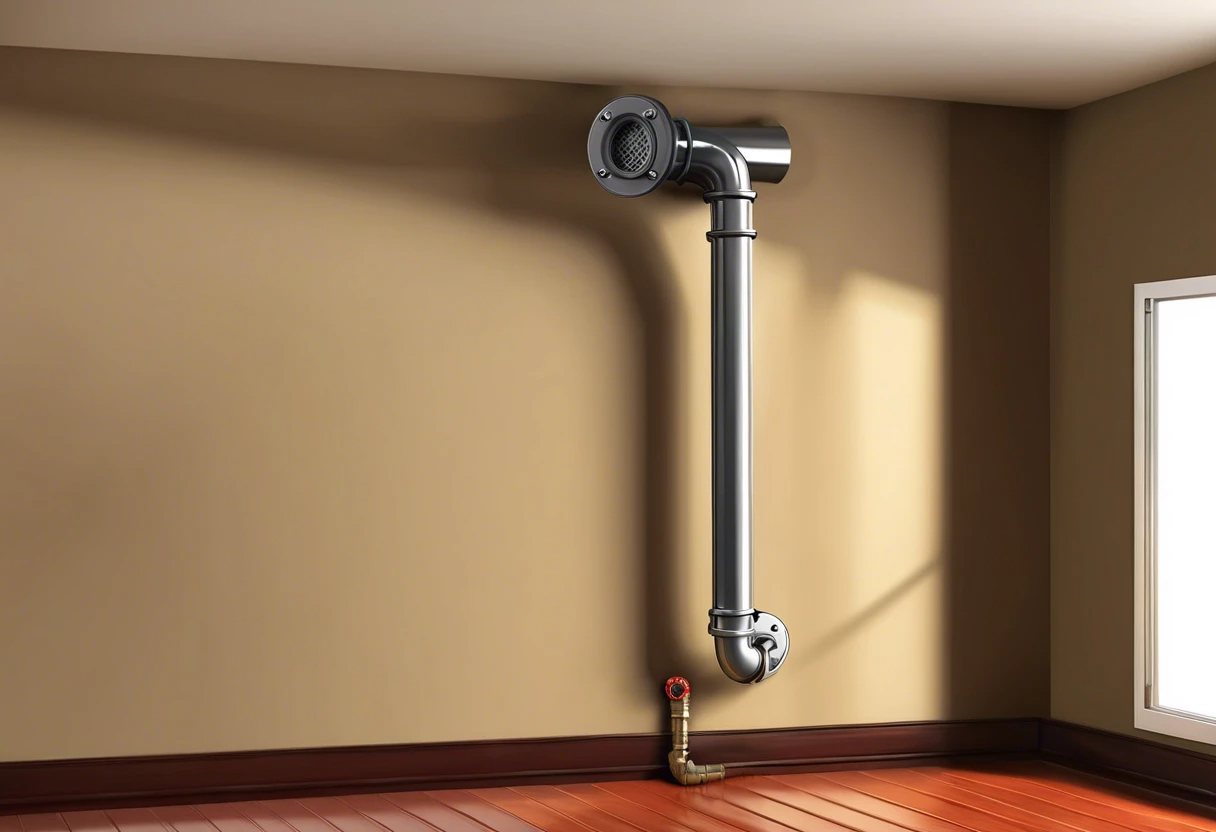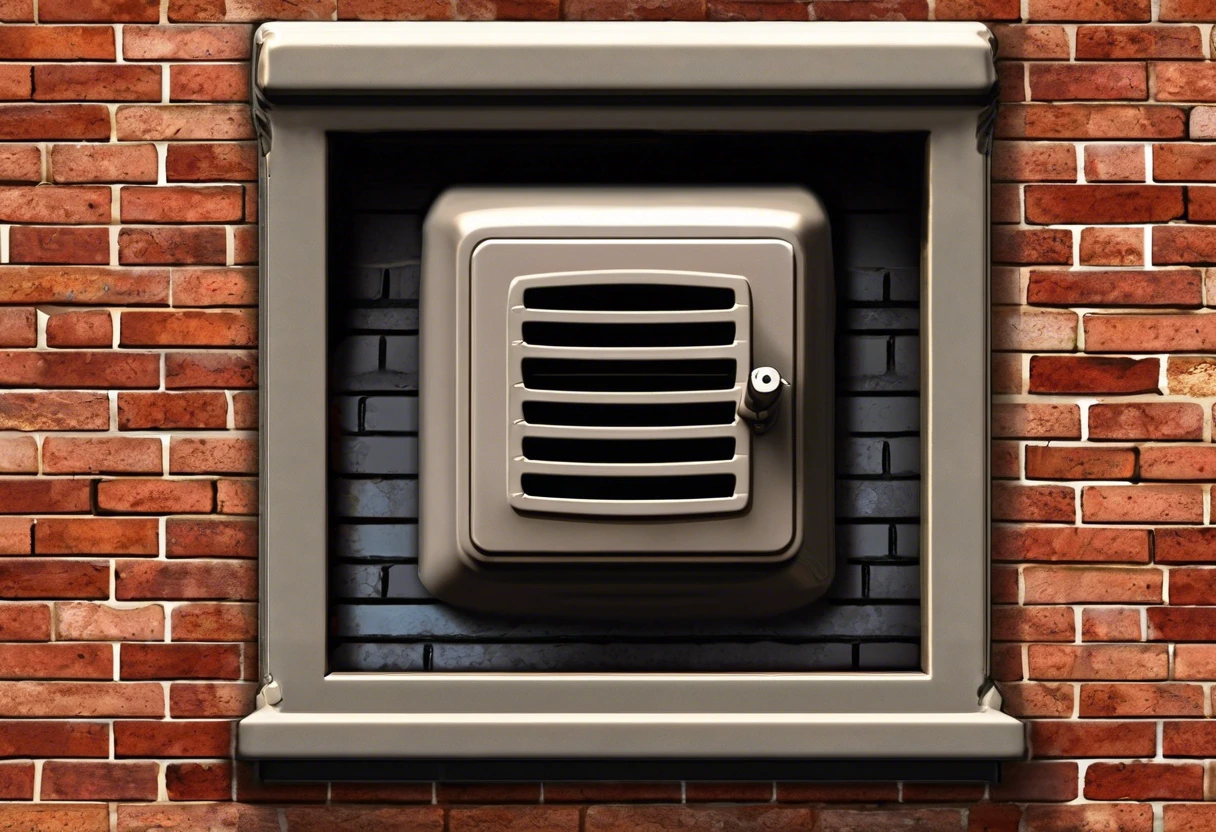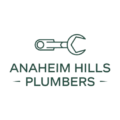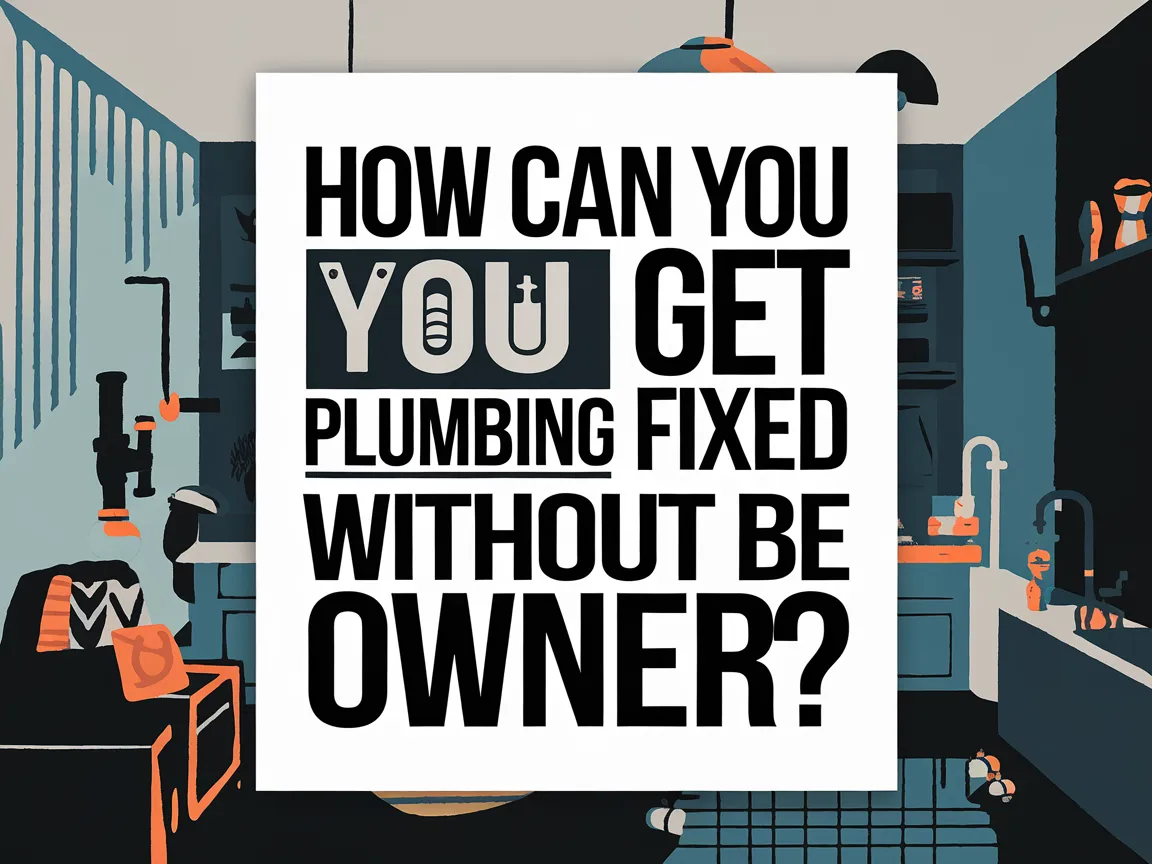Can A Plumbing Vent Exit Through A Wall? Unlocking Venting Solutions for Your Home
Published on: March 26, 2025 | Last Updated: March 26, 2025
Written By: anaheimplumbers
If you’re asking yourself whether a plumbing vent can go out through a wall, you’re not alone! You might be dealing with funky odors from your drains or looking to improve the efficiency of your plumbing system. Let’s explore this topic together.
As a plumbing expert in Anaheim Hills, I’ve faced numerous questions about plumbing vents, and I’m here to provide you with the insights you need. Whether you are considering a new installation or retrofitting an existing system, I’ve encountered various scenarios, and I’m eager to share my knowledge and tips with you.
In this guide, we’ll cover the essentials including the concept of venting through walls, important considerations for plumbing wall vents, associated costs, and when it’s best to consult a professional. Together, we’re going to ensure you feel informed and confident about your plumbing venting options.
Page Contents
- 1 Can A Plumbing Vent Go Out A Wall?
- 2 Key Takeaways About Plumbing Vents
- 3 Understanding the Concept Of Venting Through Walls
- 4 Common Misconceptions About Plumbing Vents Coming Out of Walls
- 5 Alternatives to Wall Venting
- 6 Related Considerations for Plumbing Wall Vents
- 7 How Much Does It Cost to Install A Plumbing Vent Through A Wall?
- 8 When to Consult an Expert for Plumbing Vent Issues
- 9 Frequently Asked Questions About Plumbing Vents
- 10 Final Thoughts on Plumbing Venting Solutions
- 11 Useful References for You:
Can A Plumbing Vent Go Out A Wall?
Yes, a plumbing vent can go out a wall. However, it is crucial that the vent rises above the roofline to facilitate optimal airflow. Always check local building codes before proceeding, as well as any potential obstructions such as neighboring trees and structures.
Key Takeaways About Plumbing Vents
This section highlights the essentials of plumbing vents and their installation process.
- Understanding how a plumbing vent works is key to preventing drainage issues.
- Recognizing proper installation methods can help you avoid costly problems in the future.
- Consulting an expert is crucial when you’re unsure about local venting regulations.
- This article covers key considerations, including costs and frequently asked questions regarding plumbing vents.
Understanding the Concept Of Venting Through Walls
What is A Plumbing Vent and Its Purpose?
A plumbing vent is a crucial component of your plumbing system, functioning as a pipe that allows gases to escape and ensuring your drains operate effectively. This system acts like a breathing mechanism, enhancing the performance of your plumbing. For instance, when you flush your toilet or empty your sink, the vent facilitates air entering the pipes, which is essential for maintaining a smooth flow of water. Without proper ventilation, your plumbing can become clogged, leading to potentially serious issues. In a closed plumbing system, effective venting plays a vital role in maintaining equilibrium and preventing pressure build-up. To learn more about the intricacies of closed systems and their functionality, you can explore our detailed article on closed plumbing systems.
Different Locations for Venting: Walls Vs. Roofs
So, can a plumbing vent go out a wall? Absolutely! I have installed various sidewall vents, particularly in homes nestled against mountains in Anaheim Hills. Each home has distinct configurations, which means flexibility in venting options. Understanding your unique home layout is crucial in determining the best approach for plumbing ventilation.
Benefits Of Venting Through Walls
Venting through walls is often more practical than utilizing roof vents, which can pose challenges, particularly during California’s fire season. I recall an instance where I performed a roof-to-wall conversion for a family near El Modena. We were particularly vigilant about compliance with the sidewall plumbing vent code, ensuring regulations were met to avoid future headaches.
When planning your plumbing business, it is essential to consider several critical factors, including vent and drain sizes, compliance with local building codes, and the appropriate termination height of the sidewall plumbing vent, which should ideally extend above the foundation. Given the hilly topography of Anaheim Hills, ensuring proper drainage away from the house is vital to prevent potential issues during rainy periods. Additionally, startup costs can significantly impact your initial investments. For a deeper understanding of these expenses, it is helpful to review Anaheim Hills plumbing blog.
Furthermore, the finish of the exterior wall—whether stucco, wood, or another material—affects how the vent cover integrates with the building’s aesthetic. For example, during a job last May, I successfully melded a plumbing wall vent cover seamlessly into a beautiful stucco wall.
Every detail matters when installing plumbing vents correctly. If you’re considering venting through a wall, don’t hesitate—you’ll be pleased with the outcome!
Now, let’s discuss some common misconceptions about plumbing vents exiting walls.
Also See: What is a Stoppage in Plumbing? Let’s Break It Down!

Common Misconceptions About Plumbing Vents Coming Out of Walls
Let’s address some myths regarding plumbing vents and their wall installations—I’ve encountered numerous misconceptions throughout my time as an Anaheim Hills plumber!
Misconception 1: Vents Can Be Installed Anywhere
Many people believe you can install a vent anywhere on the wall, but that’s not the case! There are specific codes and regulations to follow, particularly in Anaheim Hills. Vent placement is strategic and must adhere to standards for efficient airflow.
Misconception 2: All Vents Are the Same
Another myth is that all plumbing vents serve identical functions. In reality, there are various types of vents—like vent stacks, side vents, and air admittance valves (AAVs). I had a neighbor who mistakenly thought an AAV could replace a full vent stack; it was necessary to clarify that these serve different purposes.
Misconception 3: Venting Isn’t Necessary If You Have Modern Plumbing
Some believe that modern plumbing systems do not require proper venting, but this is a common misconception! In reality, proper venting is essential regardless of the plumbing system’s age, as it helps prevent foul odors and drainage issues. When blockages occur in your pipes, they can lead to significant stoppages that impede proper drainage and ventilation. This situation can be quite frustrating, highlighting the importance of recognizing the signs of a blockage so you can take timely action. To gain a better understanding of what constitutes a stoppage in plumbing and how to effectively address it, consider visiting this valuable resource.
Benefits of Proper Venting
Ensuring your plumbing vent through a wall is installed correctly comes with various benefits:
- Prevents sewer gas from invading your home—no one wants that smell!
- Ensures effective drainage—eliminating possible backups.
- Maintains your plumbing system’s health—keeping everything running smoothly!
With this understanding, let’s consider alternatives to wall venting.
Alternatives to Wall Venting
If wall venting isn’t suitable or doesn’t meet your needs, consider these alternatives:
1. Roof Vents
Roof vents are traditional and highly effective, ensuring proper ventilation for your plumbing system. Much like the best ticket to a concert, roof vents provide enhanced air circulation.
2. Air Admittance Valves (AAVs)
AAVs function as one-way doors—they allow air in for drainage while blocking sewer gases from flowing back into your home. I installed one in a lovely contemporary house in Anaheim Hills and was amazed at the space-saving advantages offered by AAVs!
3. Combination Vents
These serve multiple fixtures, streamlining both space usage and installation. I once combined venting for two bathrooms at a family’s home, and it made a significant difference in efficiency!
Now, let’s dive into related factors for plumbing wall vents.
Related Considerations for Plumbing Wall Vents
Let me share key considerations based on my experience with plumbing wall vents around Anaheim Hills.
Can A Plumbing Vent Go Out A Wall Without Violating Codes?
Yes, a plumbing vent can exit through a wall as long as it adheres to local building codes. Over the years, I’ve helped homeowners install sidewall vents during remodels—provided they comply with the California Plumbing Code, everyone’s happy!
Sidewall Plumbing Vent Code Requirements
Installation requirements for sidewall plumbing vents entail at least 10 inches (25.4 cm) distance from any opening. I remember once installing a side vent for a family and having to ensure those distances were met—this is critical for preventing foul odors from entering your living spaces!
Is It Permissible for A Plumbing Vent to Be in an Exterior Wall?
Absolutely! It is permissible to have a plumbing vent in an exterior wall. I executed this last summer for a home in Anaheim Hills, and it worked seamlessly while enhancing the transition into the living area.
Understanding the Process Of Plumbing Vent Through Walls
The process of plumbing venting through walls involves several crucial steps that can seem daunting at first but become manageable with practice. Once you familiarize yourself with the project, you’ll quickly gain proficiency in measuring, cutting holes, and connecting pipes and fittings seamlessly. It’s essential to label connection points properly to avoid any confusion down the line. Furthermore, implementing techniques like wet venting can greatly simplify your plumbing system. If you’re curious about the specific advantages and details of wet venting, you can explore what wet venting means.
Guidelines for Sidewall Plumbing Vent Termination
When it comes to sidewall plumbing vent termination, it’s crucial to adhere to certain guidelines to ensure proper function. Firstly, the termination point should be installed at least 12 inches (30.5 cm) above grade. I often think back to those winter mornings when debris obstructed poorly installed vents—this underscores the importance of getting this right! Another vital aspect of plumbing systems is the incorporation of angle stops, which are essential for managing water flow and can significantly help in preventing leaks.
If you’re interested in learning more about angle stops in plumbing, take a look at the detailed overview that explains how they work.
The Importance Of Plumbing Wall Vent Covers
Plumbing wall vent covers are crucial for keeping critters and debris out. Recently, I discovered a wall vent cover that turned a stormwater drain into a comfortable home for a squirrel! It’s a reminder of why using proper vent covers is a good practice.
Essential Plumbing Venting Rules You Should Know
To sum it up, here are some vital rules for plumbing venting:
- Ensure vents extend above the roofline for efficient exhaust.
- Avoid parallel vent installations to prevent water from blasting back.
- Ensure vent pipes remain unobstructed.
- Check that joints are securely connected for reliability.
Can Plumbing Vents Be Located on the Side Of the House?
Definitely! Installing vents on the side of your house is perfectly acceptable. Recently, I did just that for a client during their remodel. We navigated around some trees, but once it was done, all concerns faded away.
We’ve covered many aspects of plumbing wall vents—next, let’s discuss installation costs.

How Much Does It Cost to Install A Plumbing Vent Through A Wall?
Installing a plumbing vent through a wall typically falls within a price range of $300 to $1,500. The total cost can vary based on several factors, such as the type of wall material and the accessibility of the installation area. To ensure you are adequately prepared, it’s wise to budget towards the higher end of this range if you’re unsure about the specifics. For a more detailed understanding of potential costs, you can visit this comprehensive guide on new plumbing expenses.
Based on my experience, this task typically takes about 3 to 5 hours. A friend of mine, Mike, attempted a DIY installation and ended up calling me for assistance due to unexpected complications—but I was glad to help him minimize further costs!
Cost Breakdown
| Cost Item | Low Estimate | High Estimate |
|---|---|---|
| Materials (Pipes, Fittings) | $50 | $150 |
| Labor (Professional Grade) | $200 | $800 |
| Unexpected Expenses (Permits, Mold) | $0 | $500 |
When to Consult an Expert for Plumbing Vent Issues
If you’re feeling perplexed by a plumbing vent issue, it might be time to seek help from the experts. It’s essential to choose professionals with a stellar reputation and extensive experience in managing plumbing vent systems. One innovative approach often employed in modern plumbing is the wet venting method, which enhances efficiency while minimizing the number of necessary pipes. Understanding the concept of plumbing wet vents is crucial for effective problem-solving and overall system management. To gain a better insight into this topic, you can delve deeper by exploring what a plumbing wet vent is.
Based on my experience, a dependable plumber should possess relevant certifications and have garnered positive feedback from the local community. If you observe signs of blockages or notice persistent strange odors, these are clear signals that it’s time to consult a knowledgeable professional. Moreover, many homeowners often find themselves questioning the responsibilities of their HOA concerning plumbing issues within the community. Understanding whether your association will cover specific plumbing situations is crucial. You can find detailed information about this topic here on HOA plumbing coverage.
Benefits Of Hiring a Local Anaheim Hills Plumbing Expert
Choosing a local plumber in Anaheim Hills offers invaluable advantages, particularly their grasp of the unique plumbing challenges in our area—this knowledge can alleviate many issues! I once resolved a tricky plumbing vent situation for a client we connected with through my site, Anaheim Hills Plumbers, which made finding the right help efficient.
Ensuring that plumbing vent installations meet local codes and regulations is crucial, particularly when addressing the question, “can a plumbing vent go out a wall?” Adhering to these standards not only guarantees the safety of your system but also its overall effectiveness. Alongside compliance, it’s equally important to use the right materials for your plumbing tasks. This includes an understanding of whether shark bites are suitable for plumbing applications. These innovative fittings provide a reliable solution for making connections in tight spaces, simplifying your installation process. To learn more about their advantages, check out our detailed insights on shark bites for plumbing.
Frequently Asked Questions About Plumbing Vents
Here are some common questions regarding plumbing vents answered for your clarity.
Does a Plumbing Vent Have to Go to the Roof?
Yes, typically a plumbing vent should extend to the roof. This installation helps maintain appropriate airflow, preventing sewer gas from entering your living space.
What Happens if a Plumbing Vent is Blocked?
A blocked plumbing vent can lead to significant drainage issues and unwanted odors in your home. Effective venting plays a crucial role in draining wastewater efficiently.
How High Does a Plumbing Vent Need to Be?
A plumbing vent should reach a minimum height of 10 feet above ground level to avoid blockages caused by snow or debris, thereby ensuring effective airflow.
Can You Have Multiple Plumbing Vents?
Yes, having multiple plumbing vents throughout your home is essential for ensuring proper ventilation. This system not only helps prevent traps from clogging but also maintains overall efficiency. To achieve optimal performance, it’s crucial to understand how many plumbing vents are necessary for your specific home layout. For detailed information on the appropriate number of plumbing vents required, you can explore the specifics in the number of plumbing vents needed for your home.
What is the Purpose Of Plumbing Vents?
The primary purpose of plumbing vents is to permit fresh air into the plumbing system while releasing sewer gases outside your home. This function is critical for ensuring the proper operation of drains and maintaining a healthy indoor environment. Understanding the evolution of plumbing, particularly when indoor plumbing was invented, can deepen your appreciation for the sophisticated systems we rely on today.
Indeed, the advancements in plumbing technology illustrate just how far we’ve come over the centuries. If you’re curious about the significant milestones in plumbing history, take a moment to explore plumbing systems and components. This exploration reveals the profound impact it has had on our daily lives and our modern infrastructure.
Can Plumbing Vents Be Located Inside a Building?
Yes, plumbing vents can indeed be located inside a building, although this configuration is less common. What’s crucial is that these vents connect to a larger venting system, which enhances their overall effectiveness. If your plumbing setup involves advanced systems, gaining insight into additional methods can be valuable. For instance, learning how to plumb a power beyond valve can significantly improve functionality and efficiency. Be sure to check it out for more detailed guidance.
Final Thoughts on Plumbing Venting Solutions
We’ve covered all the key points: can a plumbing vent go out a wall, understanding venting concepts, installation costs, related considerations, and when to consult an expert.
In summary, yes, a plumbing vent can exit through a wall if properly installed. For a hassle-free experience, consider our services at Anaheim Hills Plumbers. Feel free to use our chat function for a quick quote estimate and to connect with experienced plumbers.

